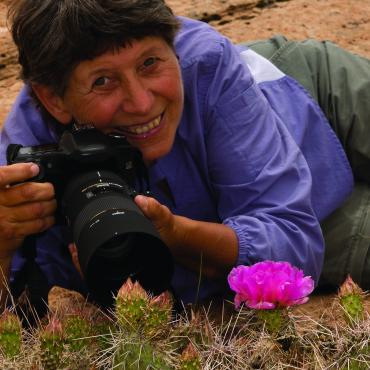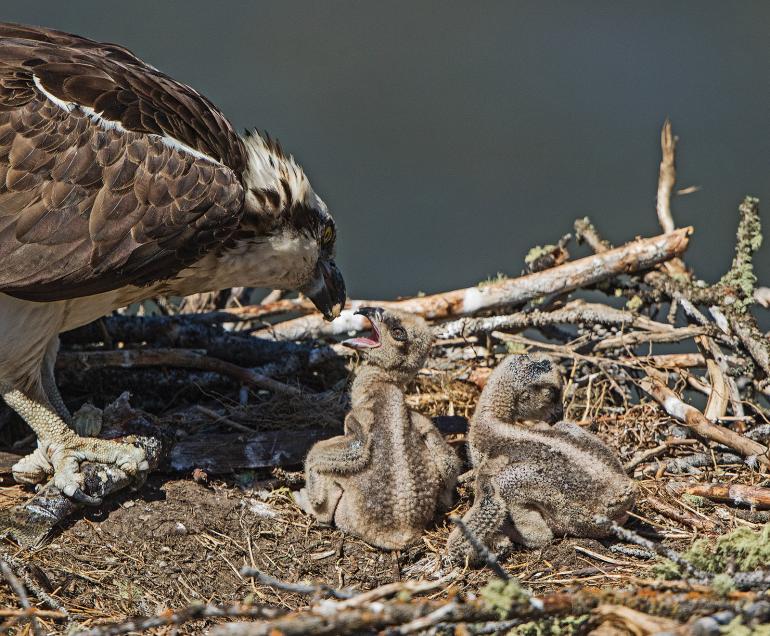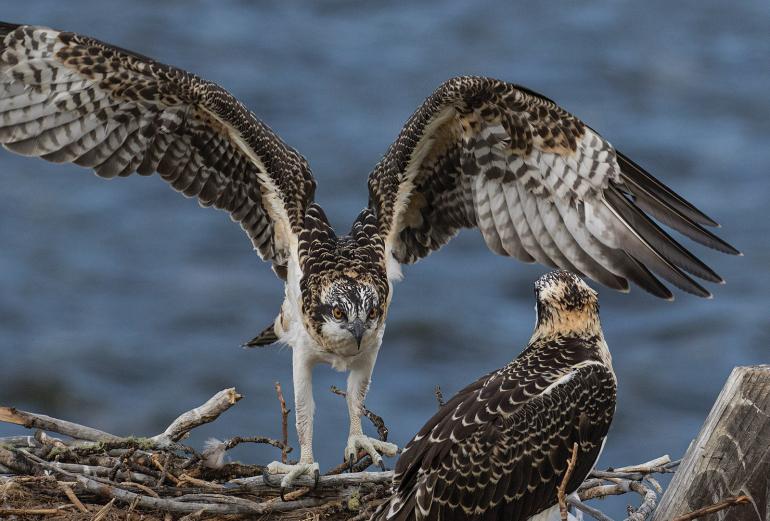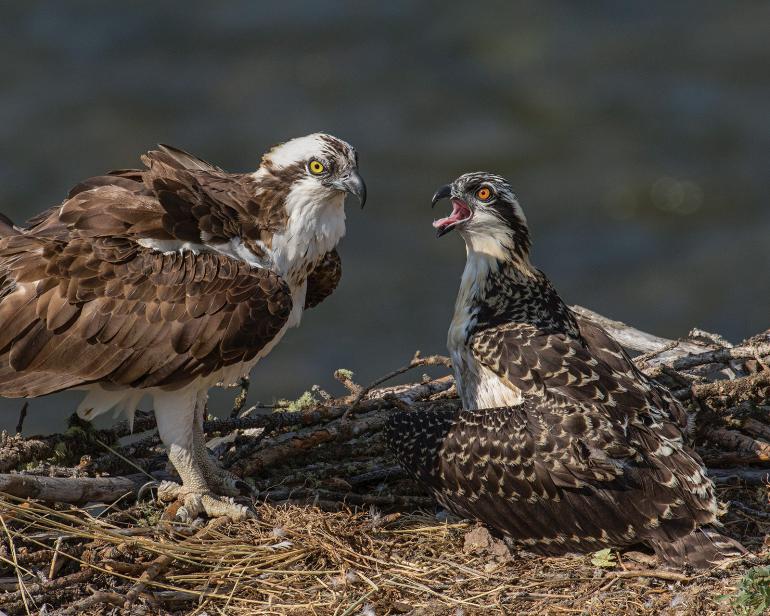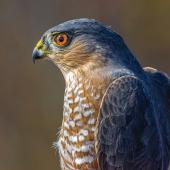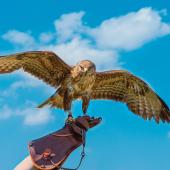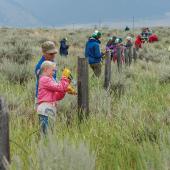Fly Away Home
An osprey nest from a bird’s eye view.
In a glide with extended wings, the male adult osprey scrutinizes the river depths below. He’s in the kill position, legs thrust forward with sharp, curved talons to snag a trout. His role is to deliver the food when beckoned by the hungry shrieks of the female. I sit above their nest, looking into it from my roadside perch.
The next 10 weeks are consumed with many hours of maintained vigilance, rewarded by learning the intimacies of osprey family dynamics. Even now, after three summers of observing this same nest every spring, I’m awed by the adult roles as to who’s in charge and when.
The week-old osprey chick bodies are shaped like light bulbs, plump and rounded below with long outstretched necks. They prop themselves up with their thin, elongated wings, rocking back and forth on their bums as the mother feeds them. In eight weeks’ time, their wingspan will reach five feet, and propel them up and out of the nest to where meals must be caught.
The female osprey is on constant alert with the chicks. When alarm shrieks are declared, the chicks hunker down with awkward, folded legs, and wiggle their way under the female’s breast. With the mother’s help, they quickly learn what to fear and how to react.
On hot days, her spread wings shade the youngsters from the sun. She teaches them bathroom breaks, too, backing up to the edge of the nest to let forth her poop. Mealtimes are dictated by open chick beaks begging for morsels. Eventually, the male arrives with a headless trout. The head is his reward and, being more boney, cannot be processed by the chicks’ delicate systems. He releases the fish into the nest and leaves the female to feed.
My final return in early September brings an empty nest in my view. I sit and wait, and, in the far distance, see ospreys soaring above the river. What were skinny, ungainly forms 11 weeks prior, are now robust and graceful raptors ready to take on survival and fly south for the fall and winter.

